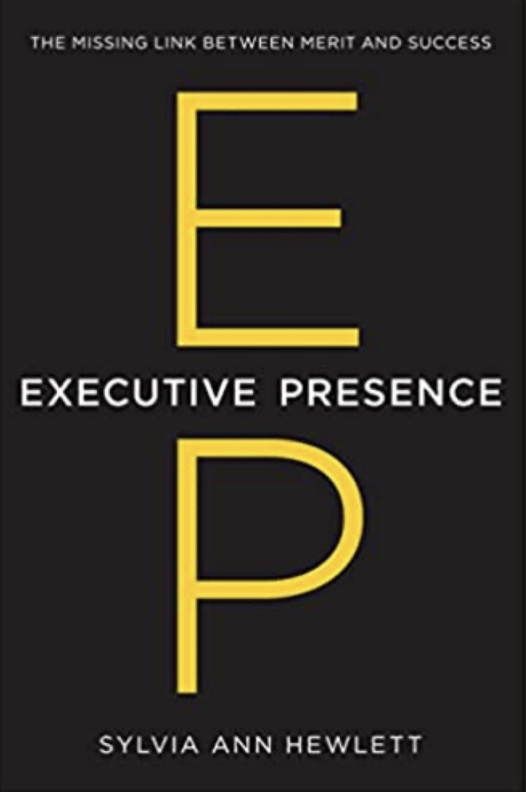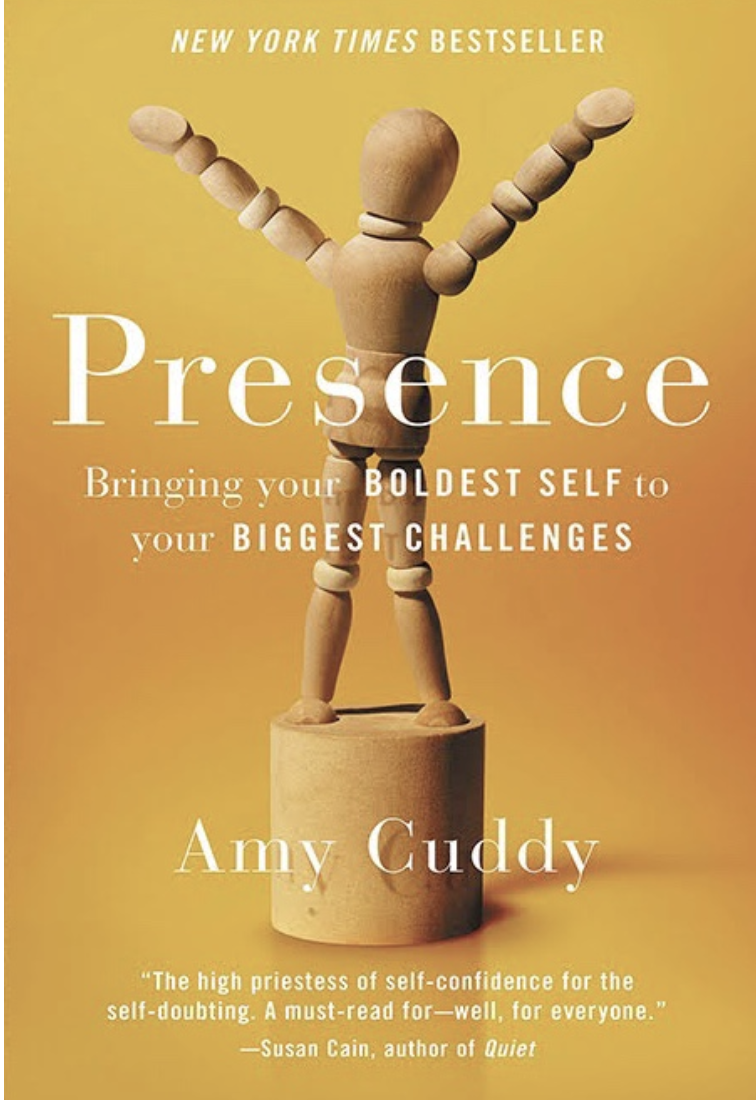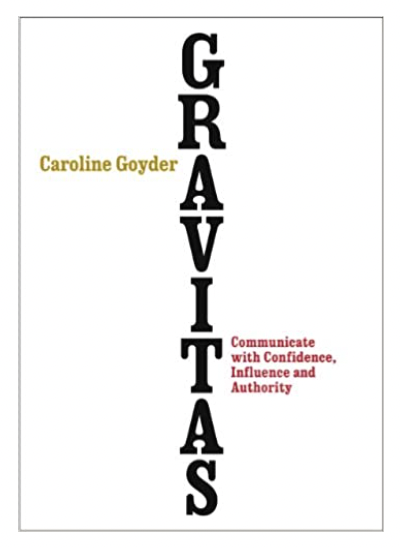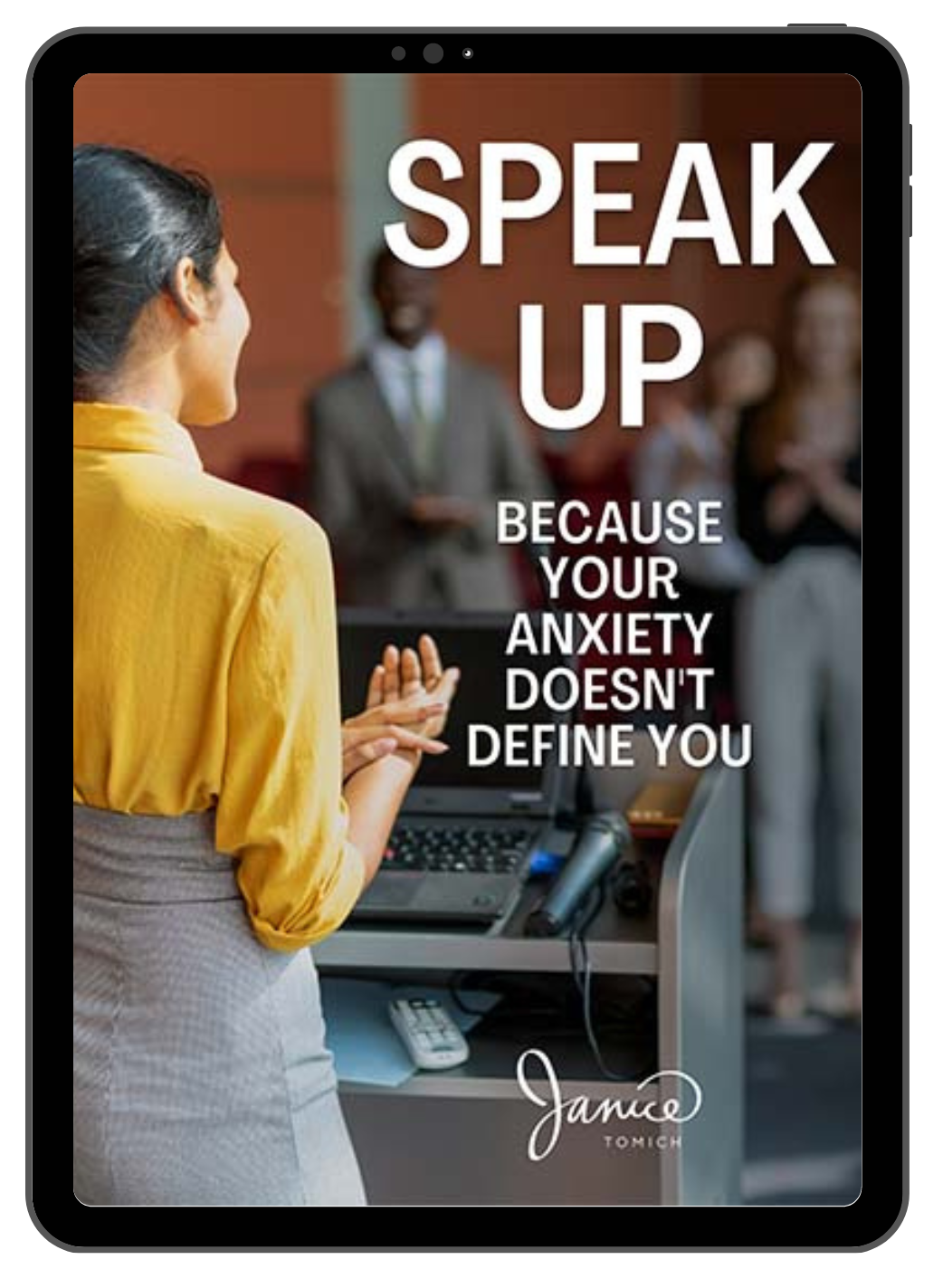Table of Contents
What Is Executive Presence?
Who comes to mind when you think about executive presence? Public figures such as United States President Barack Obama; President of The European Central Bank, Christine Lagarde; Chancellor of Germany, Angela Merkel, or media mogul Oprah Winfrey have the presence you expect from leaders. Although known as true leaders for their accomplished careers it’s not what they’ve done that defines them. It’s their presence. Their very being and essence. Their ability to command respect and influence people deeply.

Executive presence (or EP) is how others see you and the image you portray. It embodies confidence, poise, and genuineness.
Executive presence is another’s perception of success…how a successful leader looks, speaks, and acts.
Executive presence is important because it’s the conduit to opportunities, especially the juicy, plum-like ones. It’s an integral attribute that requires the depth and fortitude of merit as well the proven ability to execute on your promises.
As an avid reader and lover of books I’d like to introduce you to a few that specialize in the nuance of executive presentation. Some of these are tried and true executive communication books.
A few others are unlikely candidates.
5 Books to Develop Executive Presence
Executive Presence, The Missing Link Between Merit and Success – Sylvia Ann Hewlett (2014)
Sylvia Ann Hewlett’s book on executive presence is considered the bible.
Hewlett, through her company Coqual, is a consummate researcher with grounding from the school of hard knocks. Hewlett experienced some notoriety based on her first book “Creating A Life”, which was well researched, however she was torched by reviews that decimated her aspirations as an author. In retrospect she blames the public relations disaster on her lack of ability to manage her image – her poor executive presence.
Note that Hewlett’s book title illuminates the space between merit and success. Hewlett says you can have all the knowledge and ability to execute, however if as a senior leader you can’t ‘sell it’/or communicate your passion, as well as having the confidence to drive your initiative, your chances of being chosen are slim.
Hewlett’s approach to writing is research dense with case studies that exemplify executive presence and awareness (and lack thereof). Based on her research, she states that executive presence is founded on gravitas, communication, and appearance. She weighs gravitas as the most important, however says that all three are needed. My perspective is different in that I see gravitas as the umbrella and powerful communication and attractive appearance are under it.
Hewlett highlights a number of leaders and why they are viewed as having executive presence (or learning how to have it). One that stands out for his leadership presence is the CEO of a medical devices company that was hit with an unexpected excise tax that would significantly reduce profits. His plan of action was to move some employees within the company, however they had to also initiate substantive layoffs. He delivered the news answering every question while taking considerable blowback. He stated that as a CEO you must deliver both the good and bad news or you won’t be trusted – you have to show empathy and speak from the heart to keep your power to lead, which is the core of executive presence.
This quote from another of the book’s case studies encapsulates executive presence: “Self-confidence is your iron core,” says Anne Erni, head of human resources at Bloomberg LP. “To lean into the wind when your heart is pounding, you have to believe in yourself, deep down. It’s not something you can fake.”
Although Hewlett is a reliable source I disagree with her point of view about communication skills and their relationship to being an executive with executive presence. She talks about the importance of ‘how you say something’ being more important than ‘what you say’. They are equally as important. You can’t portray executive presence without weighing heavily on the substance side. Hewlett uses TED Talks as an example saying that it’s more about the delivery than the content – that the delivery engages the audience. In fact, TED’s first rule when choosing a speaker is they must be sharing something new/not known…an idea worth spreading. It’s all about the content. The delivery supports the content.
Hewlett shares her research around women and their ability to achieve executive leadership presence. Hewlett doesn’t convey any new information about women’s ability to secure C Suite jobs. She tells us that executive presence for women means walking a fine line. That women are usually damned if they do or don’t. She recommends that women that are senior executives must be their unique self, however demonstrates that can backfire unless they work in organizations that are well aligned and supportive with dedicated sponsors. Not very helpful, however her insight is steeped in reality.
Hewlett’s book is suited for those that want extensively researched-based data that highlights executive presence and provides solutions backed by ethnographic research. This book is not for those who want a quick primer that focuses on the what and how to attain executive presence.
If you’re feeling unheard or misunderstood, I can help.
For a more practical book on developing EP, I recommend Presence, by Dr. Amy Cuddy. It’s an easier read than Hewlett’s with more practical suggestions on building executive presence skills.
Presence: Bringing Your Boldest Self to Your Biggest Challenges – Dr. Amy Cuddy (2018)
I enjoyed Dr Amy Cuddy’s book, finding it an easy and approachable read. She is practical in how she defines presence and how it affects day-to-day living. Although her work focuses on presence as a whole, most of her insight is relatable to executive presence specifically.
Cuddy provides a fascinating example from a visiting PhD student that correlated presence data points from 185 pitch videos.
The student’s research found the participants that showed confidence, comfort, and passionate enthusiasm were most likely to receive investment dollars. Logic would tell us that savvy investors would invest in sound/lucrative projects and not be swayed by how it’s presented. Cuddy goes on to connect the dots and tells us that the reason investors are swayed by the pitcher’s presence is because it goes hand in hand with them being successful, which comes from a comfortable presence.
According to Cuddy, words, emotions and gestures must align to embody presence. We create presence, including executive presence, internally within ourselves while not trying to perform as we think others need to see us.

In the field of communication there are two camps. One that believes that public speaking, which is a component of executive presence, is a performance and those that don’t. I’m on the ’not a performance’ side because public speaking is not about acting.
In Dr Cuddy’s interview with the actor Julianna Moore they discuss the definition of presence from the perspective of the acting profession. They come to the conclusion that presence is beyond acting, rather it’s sitting in the seat of your true self – being open and vulnerable and allowing yourself to truly connect with your audience and/or fellow actors.
Cuddy and Moore identify the essence of transcendence that holds the key to presence, which is beyond performing. It is simply being, and anchored in flow. But you have to relax and trust yourself to get there. The juiciness of this is that when you can, those in the room with you, can too.
Another interesting case study that Cuddy shares is interviews with Neil Gaiman and his wife Amanda Palmer. Both are very well known and accomplished but have been haunted by imposter syndrome, which undermines presence.
Amanda Palmer who is a talented musician calls imposter syndrome the fraud police.
After writing many acclaimed books and imposter syndrome dogging him, Neil Gaiman shared this experience after completing his first draft of American Gods. He told Gene Wolfe (the famous fantasy and science fiction writer) that he had finally figured out how to write a book (and now could do it with confidence). Wolfe said, “You only figure out how to write the book when you’re writing it”. Executive presence is decimated by imposter syndrome but it’s with awareness and practice you can improve how you react when it shows up.
Cuddy theorises that when you turn your focus to others that’s when you are your most powerful. And it’s when we are in our power that we are more creative, make better decisions, are attuned to others, aren’t as bothered by or thinking about what others are thinking of us. As I tell my clients, “It’s all about your audience, not about you”.
A major focus of Cuddy’s work is body language and how it impacts presence. From her research she has learned (page 297): “Ultimately, expanding your body brings you to the present and improves your performance. Although our body language governs the way other people perceive us, our body language also governs how we perceive ourselves and how those perceptions become reinforced through our own behaviour, our interactions, and even our physiology.
Executive presence is difficult to define. It’s nebulous and in the eye of the beholder. Cuddy defines it brilliantly and provides lots of examples to improve your skills. A worthwhile read for improving your executive presence.
Another expert on presence is Caroline Goyder, I had the pleasure of interviewing her a few years ago. We talked about her book Gravitas. I was impressed by her ability to articulate what gravitas is and how to get it.
Gravitas: Communicate with Confidence, Influence and Authority – Caroline Goyder (2014)
Goyder is a voice, presentation, and public speaking expert who worked for ten years as a voice coach for Central School of Speech and Drama in the U.K. She supports professionals that are leadership material to be successful leaders.
The dictionary definition of gravitas is dignity, presence, and influence, which is the essence of executive presence. Goyder describes it as having root and wings. Roots that provide a foundation to express yourself with confidence and authority – not struggling to be like others. And wings to fly with the lightness of self knowing and belief in yourself, which I believe is the core of powerful communicators that connect with others. As Goyder drives home, if you find your gravitas and express it in a way that resonates with others, your success comes from being who you are. That’s much easier than playing the game of trying to conform, so much so that you lose yourself, isn’t it?
The magic of Goyder’s writing is identifying what can derail gravitas and the exercises she shares to build it. She really gets down to practically defining the essence of it – the tricks your brain can do and how to overcome them.
Goyder provides practical advice on ways to telegraph gravitas. One exercise helps you use the full expanse of your voice through vocal exercises.

Another, because gravitas requires ability to seesaw back and forth between logic and emotion, takes you through an exercise to build understanding of heart versus head communication. It’s these types of down to earth practises that will build the foundation to increase your executive presence.
I mentioned in my review of Hewlett’s book (above) that content supersedes delivery. Goyder goes further to say that if you step out of your zone of experience your gravitas will vanish. To communicate with passion and depth of knowledge belies gravitas. Certainly you should always be learning and stretching but don’t overstate your expertise.
Part II of Gravitas shares insight into specific communication events, presentations, meetings, calls, and interviews/pitches. For each, Goyder sets you up for success by outlining exactly what success is and how to manage yourself to get there.
Gravitas: Communicate with Confidence, Influence and Authority is a worthy read with lots of practical exercises. As Goyder tells us, if you can root yourself and feel the pull of gravity and be one with the stillness you will often be the most powerful confident person in the room.
And then we have Kasia Urbaniak’s book Unbound, which is one of the most profound and helpful books on power, which goes hand and hand with executive presence, that I’ve ever read.
Yes, ever.
Unbound: A Woman’s Guide to Power – Kasia Urbaniak (2021)
I use Kasia’s book intertwined within my client work. I’ve recommended it to many friends and colleagues. This is not a girl boss book or a book only for women. It’s for men too.
If you’re not keen on a non-status quo perspective give this book a pass.
Kasia’s book is edgy. She bases her insight on experience as a dominatrix, a teacher of the dom trade, and as a Taoist nun. From these perspectives she has broken the power code … where it lives and breathes, which sits within our very core.
Many books on executive presence, presence itself, and confidence define what it is and where it’s lacking. Awareness is created, however there’s not much deep digging into our misguided beliefs and how to work through issues to create change. Unbound does, in the most real, challenging and rewarding ways.
Most of the chapters in Unbound define the problem/issue and provide an exercise or two to help you understand how you’ve been stuck and how to unstick yourself. Prepare to get uncomfortable. It’s worth the ride because the results can be significant if you do the work. This isn’t your usual corporate communication book.
The chapter that struck home for me is the one on asking. Asking for what you want and encouraging you to make big asks. Follow Urbaniak’s lead and you’ll be asking with comfort and ease, which is a tenet of executive presence.
To be clear this is not power over others, rather the power to do. When you have confidence in what you believe, others will have confidence in you.
Based on my personal experience, through the eyes of clients that I share Unbound with, most say it was a game changer for them. It changed their perspective, one where self doubt hid, and gave practical tangible advice and exercises to build their confidence to stand tall confidently and exude charisma and presence.
And lastly from another unlikely executive presence resource…
One of my favourite poets is Mary Oliver.
“The Summer Day,” a Poem by Mary Oliver in House of Light (1990)
Who made the world?
Who made the swan, and the black bear?
Who made the grasshopper?
This grasshopper, I mean–
the one who has flung herself out of the grass.
the one who is eating sugar out of my hand,
who is moving her jaws back and forth instead of up and down –
who is gazing around with her enormous and complicated eyes.
Now she lifts her pale forearms and thoroughly washes her face.
Now she snaps her wings open, and floats away.
I don’t know exactly what a prayer is.
I do know how to pay attentions, how to fall down
into the grass, how to kneel in the grass,
how to be idle and blessed, how to stroll through the fields
which is what I have been doing all day.
Tell me, what else should I have done?
Doesn’t everything die at last, and too soon?
Tell me what is it you plan to do,
With your one wild and precious life?
It is through Mary Oliver’s words that presence (and executive presence) ultimately lies.
From books with a heavily researched base approach to a food for thought poem, these five chosen authors provide lots of insight into the nuances of executive presence.
Let’s connect and talk about how you can transform into the leader you want to be. Book an introductory call with me today. I will help you communicate with confidence and ease to elevate your executive presence.
For more book recommendations, see also my list of public speaking books actually worth your time.







